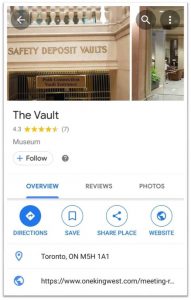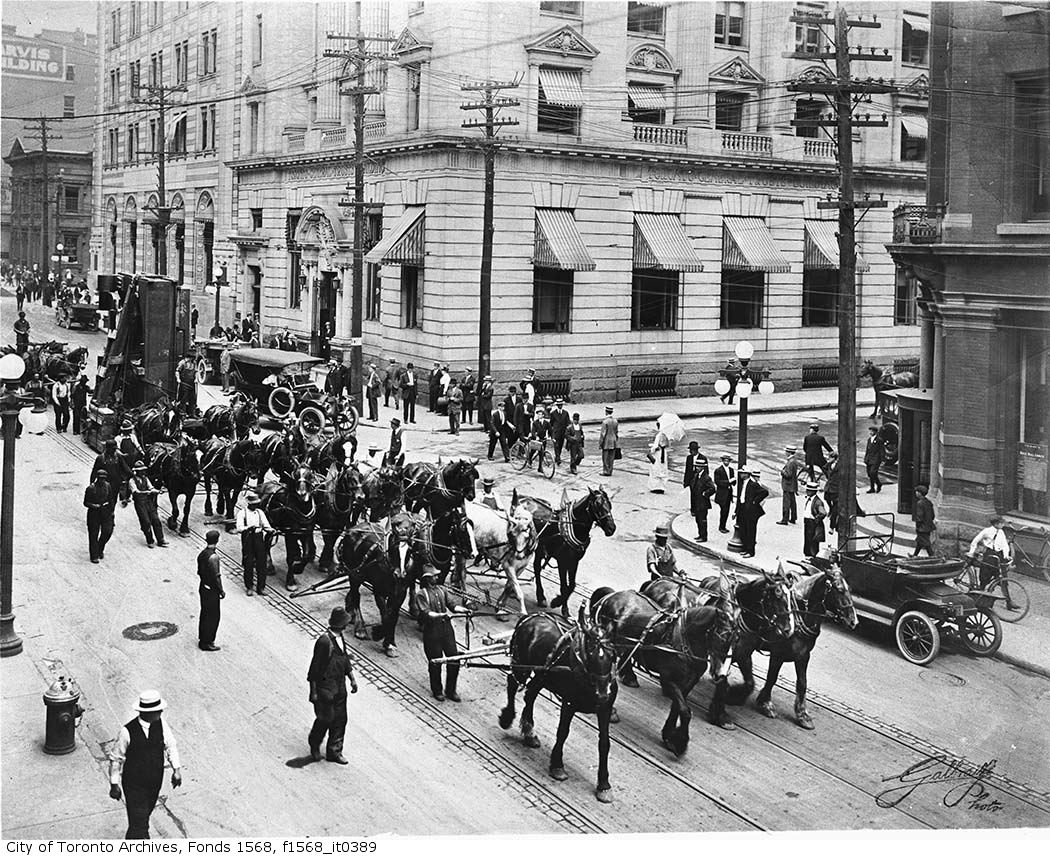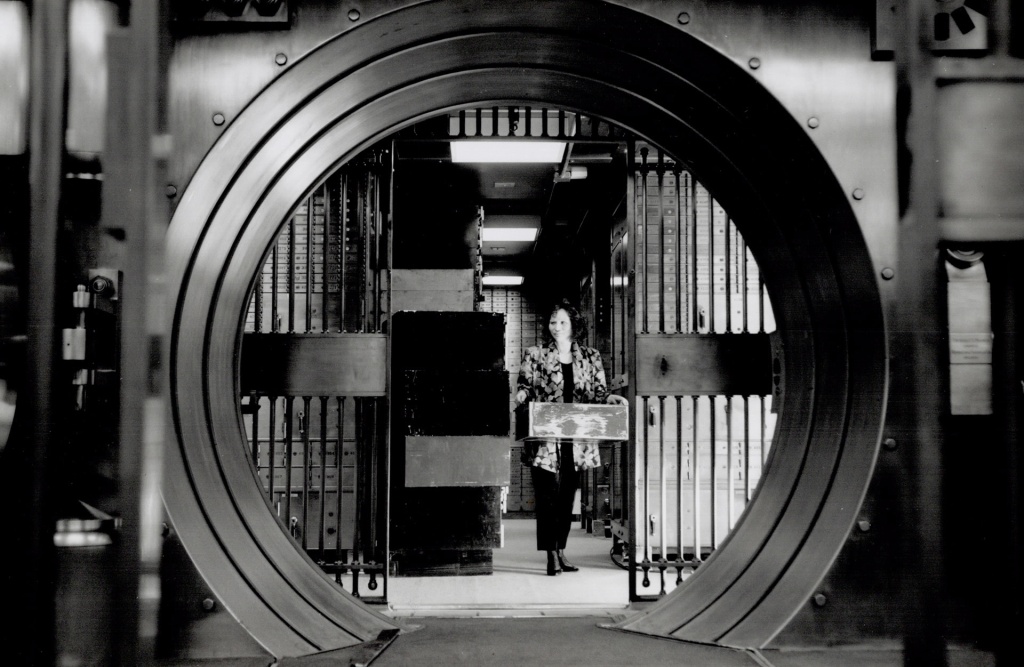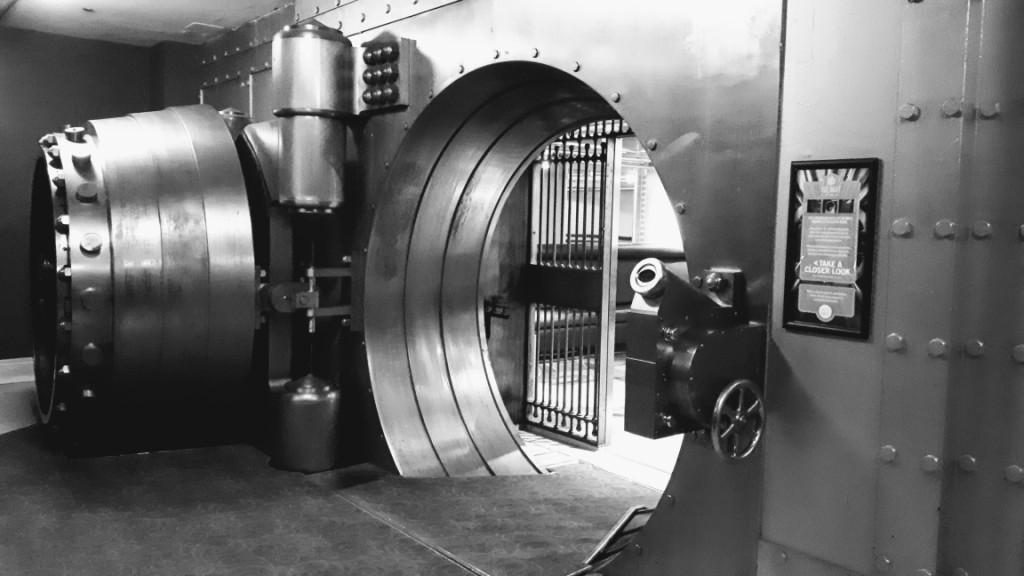One of the best things about my 100 Museums Challenge project is finding places in my own city that I never knew existed. The Vault at One King West in Toronto is a terrific example.

Now an event venue (“Perfect for pre-reception cocktails or small corporate parties”) under One King West Hotel & Residence, the 1914 vault is a historical relic of the former Dominion Bank Building.
The Vault appeared on my phone as I was searching Google Maps listings for “museums” downtown, and I was skeptical that this could be labeled a “museum,” even under my project’s loose definition. However, sure enough, one afternoon I sauntered into the lobby of 1 King St. W. and down the stairs under the “Safety Deposit Vaults” sign, and there was the gleaming steel door of the large-as-life piece of security technology, wide open.
A sign invites the visitor to take a closer look at the inner workings of the locking device. (It was a relief to know that poking about in this private space was welcome and actually encouraged.) Four colourful panels with photographs describe the history of the building and the vault itself. So yes, a museum.
A panel explains:
The round shape, chosen because it communicated gravitas, created a design conflict with the vault’s floor. The innovative solution was an arc-shaped section floor, raised and lowered on a hydraulic cylinder to allow the massive door to swing open and closed.
By the beginning of the 20th century, most technical problems with vault security had been solved. Locks, hinges, metallurgy, and fire resistance had evolved to a high level of sophistication. To confront the problem of tunnelling, passages were built around and beneath the vault and fitted with steel grills, mirrors, and lights, allowing security complete access and surveillance.
The vault had a telephone and ventilation system, in the unlikely event that a depositor was locked in while placing valuables in a safety-deposit box.
The extraordinary photo below shows the Dominion Bank vault being transported down Bay Street in July 1914 (by, yes, 18 horses), to be installed in the bedrock of the new Dominion Bank Building under construction at Yonge & King Streets.

Here’s a look at the vault in use in 1991. So many safety deposit boxes.

A historical plaque outside the Dominion Bank Building tells the end of the story. A Toronto Dominion branch (after the 1955 merger) continued there until 2000, and after a redesign, the building was opened for residential use in 2005.
The historic vault’s still there, and worth dropping by the One King West Hotel & Residence for a look (no official open hours, as far as I can tell). While you’re there, be sure to pop upstairs to see the elegantly restored Grand Banking Hall too, now also an event venue.
The Vault at One King West is museum no. 40 in my #100museums challenge (see 100 Museums Challenge).

